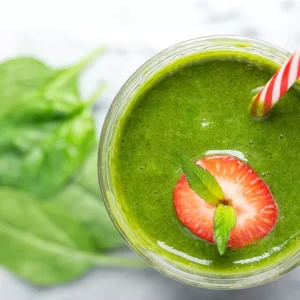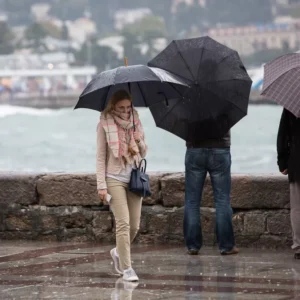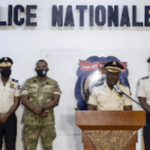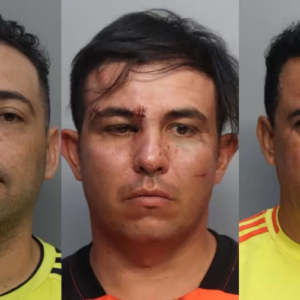Over a period of less than 10 years, the Haitian cultural world, particularly pictorial art, experienced two terrible cataclysms, the earthquake of January 12, 2010 and the outbreak of violence by armed gangs, particularly in the metropolitan area of Port- au-Prince from the year 2018.
It is indeed worth remembering that apart from the massive losses of equipment and stocks of artistic inputs, this earthquake caused the destruction of numerous famous sites of manifestation of pictorial art, including the Center d Haitian art, a true source of inspiration for the visual arts and conservation of pictorial heritage, and the Collège Saint-Pierre Art Museum, the main venue for painting exhibitions and openings. However, despite this heavy toll, many artists, collectors and operators in the sector believe that the security crisis has hit the Haitian cultural sector much harder than “Goudougoudou”.
And for good reason: this predatory violence carried out by armed gangs for at least five years has not only resulted in the closure, vandalism or burning of a large number of plastic art production centers. The Noailles Artistic Village in Crois-des-Bouquets, deserted since October 2022, the Workshop of the painter Lionel St Eloi, burned down in Carrefour Feuilles on August 13, 2023, the “Atis resistans” plastic art workshops on Grand-Rue , which despite an attempt at resistance to the threat of armed gangs still had to resign themselves to closing their doors in February 2024, the Araka Cultural Center and the National School of Arts (ENARTS), located in the Center -ville, vandalized in March and April of this year (…), are unfortunately all very sad examples which teach us about the level of harm linked to the violence suffered by the artistic community in Haiti.
However, although less visible and less publicized, the activism of the men of “Izo 5 sekond”, “Kris-la”, “Ti Lapli”, “Barbecue”, “Kampes”, “Vitelhomme”, of “Jeff”, “Chen Mechan”, “Lanmo sanjou”, etc., will also have led to psychological and social suffering that is difficult to count in the statistics on crime in Haiti. This is precisely to avoid half-measures on the real results of the action of these armed gangs and above all to prevent a kind of discriminatory victimization between the populations of neighborhoods in a precarious situation or in transition and the populations of neighborhoods in a socio-economic situation. -comfortable economic that the painter Vanessa St-Val set out to echo these psychosocial traumas. These mental and behavioral pathologies have no social boundaries as the disturbing images of gang violence manage to penetrate in real time the solid fences of the large residential districts of Pétion-ville, Laboule and Kenskoff through television and social networks. Suffice to say, the often unconscious feelings and emotions in the victims themselves with which the young painter St-Val proposes to dialogue through her works, are representative of the mental state of a Haitian community which is combined in the plural.
That being said, when this Friday, May 31, we had the pleasure of attending this private opening in the artist’s residence in Montagne Noire, we were immediately challenged by the floods of emotions that sought to be expressed. emancipate from the shapes and colors of the works that were exposed to our gaze and especially by the multiple feelings still alive which always seemed to resonate in the heart of this humanist artist. All this to say, in accordance with an “Art-Therapy” approach, the young St-Val uses her creative imagination, the sometimes rigid, sometimes disordered lines of her drawings and the play of colors, often bright and sometimes dark to showcase messages echoing the trauma linked to the violence caused by this confederation of gangs, called “Viv Ansanm”.
From then on, an explosion of diverse and varied feelings and emotions emerges in the artist’s works, emerging from the subliminal intimacy of the victimized being. These therapeutic works which already form a collection of more than fifty paintings, mixing at the same time, fear, anguish, despair, loneliness, anger, guilt (…), are certainly inhabited by a force of expression which challenges us and invites us all to a deep awareness of our own individual vulnerabilities in the face of these constant risks of assassination, kidnapping and rape which continue to nourish the daily life of Haitians whether they are in a poor or wealthy environment .
Moreover, works such as “The Devil is Unleashed”, “The Smile of Baron Samdi”, “Hell in Paradise”, “Quest for Freedom” (…) bring back from the artist’s subconscious scenes of terrifying violence fueled in particular on social networks by what we can call “Advertising Terrorism”. This intimate relationship between the artist and a morbid and unbearable reality perhaps explains why these different canvases are painted with nervousness, combining tangible forms, abstract lines and above all an explosion of bright colors, as if to bear witness to the bursts of blood. many citizens victims of gang shooting.
However, in this almost unconscious psychotherapeutic approach of the artist which allows his paintings to be constantly invaded by interior images and by emotions linked to the reflections of life or to the sensory experiences of a deeply disturbed recent past, the work which most piqued our curiosity is the one named after the most famous Haitian gang leader in the Caribbean, even in the world, namely “Barbecue”.
Painted in a 36 x 36 format, the subject of this painting, called “The Damned Soul” was inspired by a photograph, the artist tells us, taken during the celebration by the leader of “Viv ansanm” , of the success of his punitive expedition against the Solino district last May. This scene which shows a jubilant Barbecue on the roof of a vehicle, equipped with a mini bottle of Rum and bathed by the jets of champagne from his companions in organized crime was captured by the artist’s camera.
But strangely enough, television and social networks projected at the time, if we recall, the image of a happy and confident Barbecue, to the point that he took the opportunity to harangue the government as well as the Multinational Security Support Mission. However, several images of the scene captured by the lens of the artist’s camera, which we witnessed, on the contrary show the face of a frightened and terrified Barbecue. Indeed, by observing these digital images from many angles, one could easily think that this big boss was in dialogue with a hostile man or a demonic entity, as if it had come to tell him bad news concerning his own immediate destiny. .
That said, can we understand from this that these demonic spirits which seem to inhabit these gang leaders are today satisfied with the blood of the innocent, as seemed to want to affirm this painting mentioned above projecting a broad smile on the face of “Baron Samdi”? Can we understand that these evil spirits no longer need the services of these brainless quadrupeds? In any case, nothing allows us today to assert the opposite, especially since Haitian mythology is teeming with stories and anecdotes of individuals who, once having served infernal entities to satisfy their ambitions, ended up being “eaten” by these very people. From such a perspective, we would immediately have understood the aptness of the title, “Damned Soul”, given by Vanessa St-Val to this morbid painting representing the infamous gang leader Barbecue.
Whatever the case, the artist who presents herself as an all-rounder fortunately does not allow herself to be absorbed exclusively by negative emotions. On the contrary, the latter also uses her brushes and her canvas to give life to less painful feelings, this time more related to love, joy, passion, hope (…), as evidenced elsewhere. his paintings entitled, “Renaissance”, “Female Nudity”, “Orgasm”, “Cosmic Ejaculation”, etc.
Speaking of versatility, we must emphasize that if the artist works in his works to give voice to the least perceptible or audible traumas in direct relation to gang violence, these subliminal messages take shape in different styles of painting. . Some of St-Val’s paintings project their messages through their drawings which represent relatively concrete scenes or realities, while others illustrate their messages through the combination of shapes and colors seeking more to create a visual experience through perspective. .
In any case, in either case, the artist admits to having been influenced by various sources, such as Philippe Dodard, Laurent Reynold and Eftee, even if in some of these paintings one could slightly feel the presence of the mythical shadow of the Saint Soleil School, the smell of a Franck Etienne, even the legacy of certain naive painters, like Lafortune Felix.
If the fact of drawing from all these sources brings to the artist a richness of style and a variety of technique and sensitivity which will be useful to him in pushing towards a more mature experimental art, the artist must nevertheless seek to avoid too much disperse, even if she remained attached to a quest for freedom. Hence, moreover, the title of this opening “Sparkle of freedom!” “.
For the moment, we will hope, like certain personalities like Prince Harry and Princess Meghan, the tennis woman Naomie Osaka, who thanks to their advocacy were able to make the fight against psychosocial trauma a “Buzz Subject”, that this category of little-publicized impacts linked to gang violence be taken into account both in the action plans of local and international actors targeting the period of the conflict in Haiti and in their action plans covering the post-conflict period.
Prof. James Boyard
Collector and art critic/ Email: [email protected]









